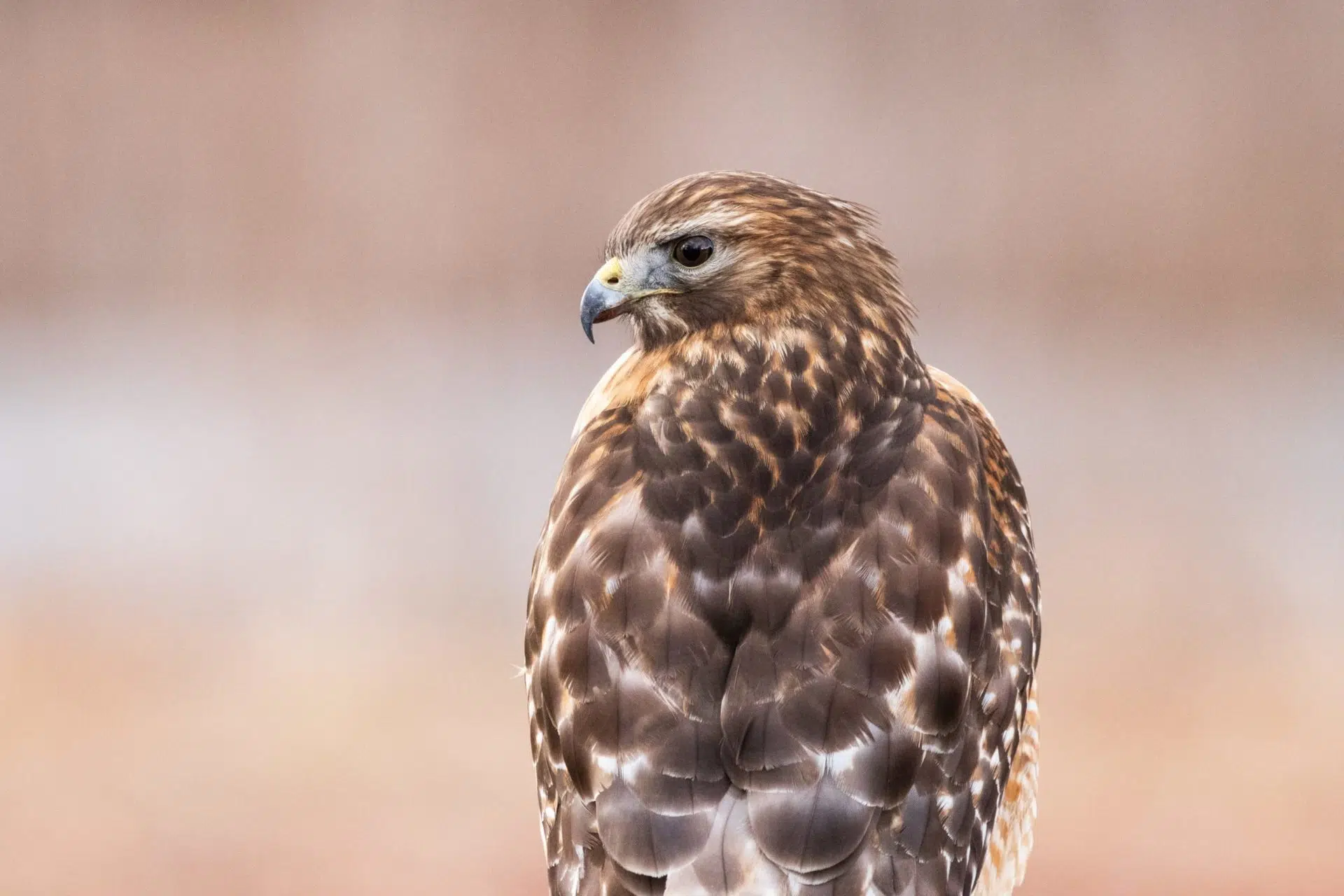Birds
Red-shouldered Hawk
Buteo lineatus

Voice: Fast, high pitch scream, “Keeyer, Keeyer, Keeyer.”
Red-shouldered Hawk’s robust body, broad wings, short tail and soaring flight make is a perfect fit for the Buteo family. This crow sized hawk unlike the other Buteos can be found in Ohio year round in moist woodland habitats including suburban woodlots. Red-shouldered Hawks can often be seen perched on a tree branch above a semi open area hunting for food. Their diet includes medium sized reptiles including snakes, amphibians, small mammals, birds, insects, and crayfish. It occupies the same range in the eastern U.S as the Barred Owl. However, the Red-shouldered Hawks are active during the day while Barred Owls are active at night.
In Ohio, during breeding season, April-late June, Red-shouldered Hawks are vocal early in breeding season in their nesting territory then become secretive later in the season. Pairs or future generations usually remain in the same territories and reuse the same nest-sites for many years. Generally by March they build or rebuild their nests with sticks, Leafy twigs, leaves and lichen. The longest record of a nest used by Red-shouldered Hawks is 45 years.
Typically the Red-shouldered Hawks build their nest halfway up tree, in a fork of main trunk; in conifers trees nests are built against the main trunk where a whorl of other branches meets the trunk. Mainly females incubate 2 to 4 white with brown blotchy eggs. Incubation begins when the first or second egg is laid, and lasts for 33 days. By the time they are five days old, nestling Red-shouldered Hawks can shoot their feces over the edge of their nest. Chicks leave the nest around 5-6 weeks old, but are fed by the parents for another 6 to 10 weeks.
At one time the Red-shouldered Hawks were once the most common hawk in Ohio. Today, Red-tail Hawks are more common than Red-shouldered Hawks. The clearing of forests over the last two centuries and the use of DDT has decreased the population. However in recent years, since the banning of DDT in the United States and the regrowth of forest, populations of Red-shoulder Hawks are on the upswing or have remained stable in Ohio.
What you can do to help? Plant trees in your neighborhood. Support organization like The Holden Arboretum in protecting large forested tracts of land.
Best Location to View: Old Valley Trail, Pierson’s Creek Loop, Wildflower Garden, Woodland Trail
Color: Sexes look alike, Female slightly larger. Adults- reddish brown head, a brown back and reddish shoulders and under parts with brown streaks; barred black and white tail
Range: Generally year round resident of Ohio. Breeds in Southeast Canada down to eastern United States and west of the Sierra Nevada in California. Populations in North and East may migrate during the fall as far a northern Mexico.
Size: 17-24"




